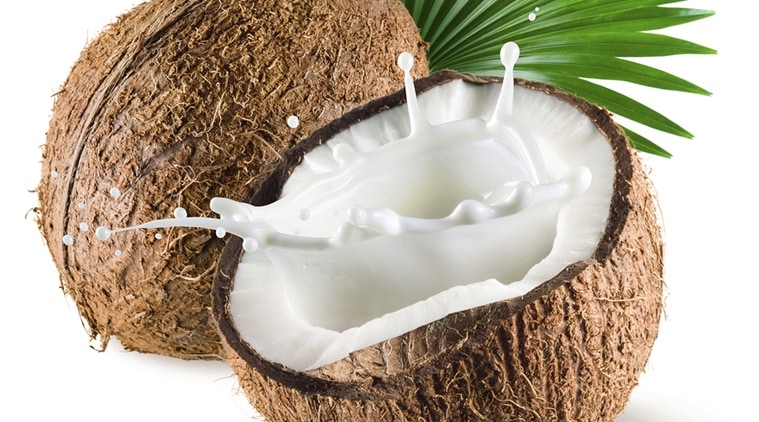Purslane is a succulent annual trailing plant that grows in many countries because it thrives in poor soil. It can be eaten as a cooked vegetable and is great to use in salads, soups, stews or any dish you wish to sprinkle it over. Purslane is antibacterial, antiscorbutic, depurative, diuretic and febrifuge.
Soft, succulent Purslane leaves have more omega-3 fatty acids than in some of the fish oils. If you are a vegetarian and pledge to avoid all forms of animal products, then here is the answer! Go for this healthy dark-green leafy vegetable and soon you will forget fish!
Botanically, this herbaceous leafy vegetable belongs to the family of Portulacaceae and scientifically known as Portulaca oleracea.
Other common names in place for this green leafy are pursley, pigweed, or verdolaga.
Purslane is native to Indian sub-continent and now distributed widely across the continents but actually as a wild weed. There exist varieties of pursley with variation in leaf size, thickness, and leaf arrangement and pigment distribution. This hardy herb plant requires relatively less water and soil nutrients and grows well sunny climates. The plant grows up to 12-15 cm in height as a low-lying spread.
Purslane is widely grown in many Asian and European regions as a staple leafy vegetable. Its leaves appear thick, mucilaginous, and have a slightly sour and salty (piquant) taste. Leaves and tender stems are edible. In addition to succulent stems and leaves, its yellow flower buds are also favored, especially in salads.
Purslane seeds, appear like black tea powder granules, are often used to make some herbal drinks.
PURSLANE HEALTH BENEFITS
Like many other weeds, purslane is not only edible but also far more nutritious than many of the crops that we plant! Here’s just a few of the health benefits of purslane:
- Seven times the beta-carotene of carrots. It is an excellent source of Vitamin-A, (1320 IU/100 g, provides 44% of RDA) one of the highest among green leafy vegetables. Vitamin-A is a known powerful natural antioxidant and an essential vitamin for vision. It is also required to maintain healthy mucosa and skin. Consumption of natural vegetables and fruits rich in vitamin-A is known to help to protect from lung and oral cavity cancers.
- Six times more vitamin E than spinach
- Fourteen times more Omega 3 fatty acids.
- Purslane is also a rich source of vitamin-C, and some B-complex vitamins like riboflavin, niacin, pyridoxine and carotenoids, as well as dietary minerals, such as iron, magnesium, calcium, potassium, and manganese.
- Furthermore, present in purslane are two types of betalain alkaloid pigments, the reddish β -cyanins, and the yellow β -xanthins. Both pigment types are potent antioxidants and have been found to have antimutagenic properties in laboratory studies. [Proc. West. Pharmacol. Soc. 45: 101-103 (2002)].
Purslane is also said to be a natural remedy for insomnia. It has many of the same health benefits as other leafy greens.
SERVING SUGGESTIONS AND PREPARATIONS:
In the market, buy fresh and healthy-looking purslane; look carefully for mold, yellow or dark spots as they indicate inferior quality. Go for organic produce whenever feasible.
Wash fresh leaves and stem in clean cold running water in order to remove any sand and insecticide/fungicide residues. After removing from water, mop it with a soft cloth to remove any moisture in them before storing in the refrigerator.
Purslane can be kept in the frige for about 3-4 days but should be eaten while the leaves are fresh and not wilted.
The stems and flower buds are also edible. Trim the tough stems near roots using a sharp knife. Cook under low temperature for a shorter period in order to preserve the majority of nutrients. Although antioxidant properties are significantly decreased on frying and boiling, its minerals, carotenes, and flavonoids may remain intact with steam cooking.
Here are some serving tips:
- Fresh, raw leaves can be used as salad and as vegetable juice.
- Fresh, tender leaves are used in salads. Sautéed and gently stewed stems and leaves served as a side dish with fish and poultry.
- It has also been used in soup and curry (Goni soppu curry) preparations and eaten with rice and ragi cake (ragi mudde) in many mouthwatering purslane recipes in South Indian region, especially in parts of former Mysore province of Karnataka state.
- Stir-fried and mixed with other like-minded greens such as spinach and vegetables, it makes favorite dishes.
Purslane contains oxalic acid, a naturally-occurring substance found in some vegetables, which may crystallize as oxalate stones in the urinary tract in some people. 100 g fresh leaves contain 1.31 g of oxalic acid, more than in spinach (0.97 g/100 g) and cassava (1.26 g/100 g). It is, therefore, people with known oxalate urinary tract stones are advised to avoid eating purslane and certain vegetables belonging to Amaranthaceae and Brassica family. Adequate intake of water is therefore encouraged to maintain normal urine output.



No comments:
Post a Comment